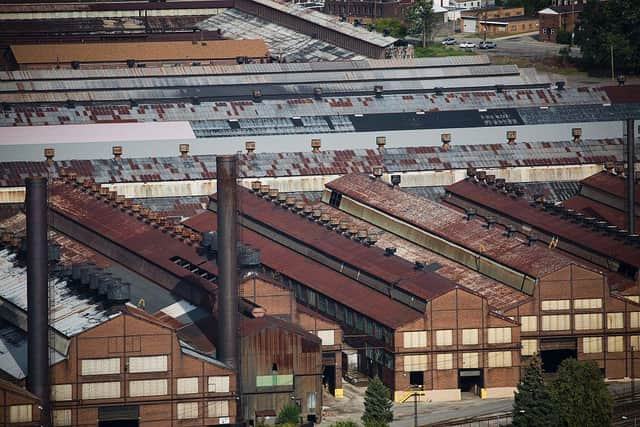What is the Rust Belt? Where swing states such as Pennsylvania, Wisconsin and Michigan get their unflattering name
The result of the United States election will be decided by a small number of key swing states.
Among them are Wisconsin, Michigan and Pennsylvania, all three of which sided with Donald Trump over Hillary Clinton at the 2016 election.
Advertisement
Hide AdAdvertisement
Hide AdMichigan has already flipped in Biden’s favour, while many news outlets have already called Wisconsin in the Democrat’s favour.


Pennsylvania, the victor of which would gain 20 electoral votes, is still to play for, with Biden closing in on Trump’s initial healthy lead.
The three key states are part of an area in the northern United States, along with Ohio, Indiana and Illinois known as the Rust Belt.
Why is it called the Rust Belt?
For much of the 20th century the region was dominated by the coal, steel and manufacturing industries, partly due to its proximity to the Great Lakes, canals, and rivers,
As these industries diminished, the region earned its new unflattering moniker in the late 1970s, following years of decline caused by manufacturers moving operations abroad due to increased cost of labour and resources in the United States.
With many factories left abandoned and exposed to the elements, they literally began to rust, hence the name.
The deindustrialisation and economic decline of the area has brought with it fewer high-paying jobs and high poverty rates.
The term is attributed to Walter Mondale, the Democratic candidate in 1984, who linked the area’s decline with policies of his election rival, Ronald Reagan.
What are the Rust Belt states?
Advertisement
Hide AdAdvertisement
Hide AdStates (at least partly) considered to be part of the region are:
- Indiana
- Illinois
- Michigan
- Missouri
- New York; Upstate and western regions
- Ohio
- Pennsylvania
- West Virginia
- Wisconsin
Why are they swing states?
In recent history, the states have been crucial in the presidential races, with Michigan, Wisconsin, Pennsylvania and Ohio all referred to as swing states, or states which flip between backing the Democrat and Republican parties.
The economic decline of the region - and the problems this brought - has seen the loyalty of local Democrats tested.
In 2016, President Donald Trump promised Rust Belt states a return to the boom years of old, vowing to regenerate manufacturing in the area and reignite the country’s steel industry.
These claims helped to sway many voters in the area and ultimately led him to key victories in Michigan, Ohio, Wisconsin and Pennsylvania.